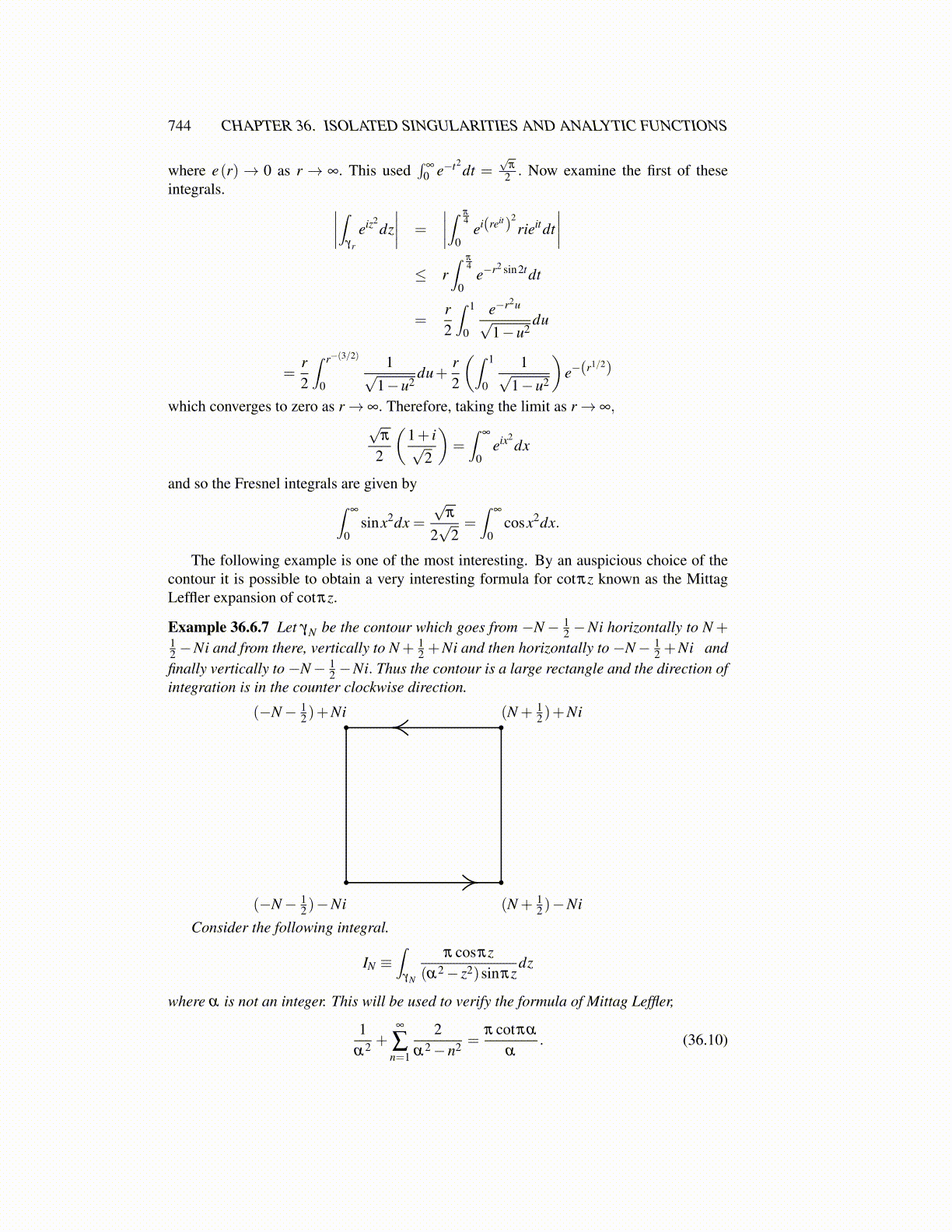
744 CHAPTER 36. ISOLATED SINGULARITIES AND ANALYTIC FUNCTIONS
where e(r)→ 0 as r → ∞. This used∫
∞
0 e−t2dt =
√π
2 . Now examine the first of theseintegrals. ∣∣∣∣∫
γr
eiz2dz∣∣∣∣ =
∣∣∣∣∫ π4
0ei(reit)
2rieitdt
∣∣∣∣≤ r
∫ π4
0e−r2 sin2tdt
=r2
∫ 1
0
e−r2u√
1−u2du
=r2
∫ r−(3/2)
0
1√1−u2
du+r2
(∫ 1
0
1√1−u2
)e−(r1/2)
which converges to zero as r→ ∞. Therefore, taking the limit as r→ ∞,√
π
2
(1+ i√
2
)=∫
∞
0eix2
dx
and so the Fresnel integrals are given by∫∞
0sinx2dx =
√π
2√
2=∫
∞
0cosx2dx.
The following example is one of the most interesting. By an auspicious choice of thecontour it is possible to obtain a very interesting formula for cotπz known as the MittagLeffler expansion of cotπz.
Example 36.6.7 Let γN be the contour which goes from −N− 12 −Ni horizontally to N +
12 −Ni and from there, vertically to N + 1
2 +Ni and then horizontally to −N− 12 +Ni and
finally vertically to −N− 12 −Ni. Thus the contour is a large rectangle and the direction of
integration is in the counter clockwise direction.
(−N− 12 )−Ni (N + 1
2 )−Ni
(N + 12 )+Ni(−N− 1
2 )+Ni
Consider the following integral.
IN ≡∫
γN
π cosπz(α2− z2)sinπz
dz
where α is not an integer. This will be used to verify the formula of Mittag Leffler,
1α2 +
∞
∑n=1
2α2−n2 =
π cotπα
α. (36.10)